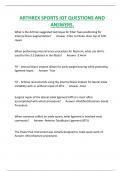Samenvatting
Summary Linguistics 3: The Study of Language
- Vak
- Linguistics
- Instelling
- Fontys Hogeschool (Fontys)
Samenvatting van de besproken hoofdstukken van The Study of Language. Bevat niet The Story of English (het tweede gedeelte van dit vak).
[Meer zien]













